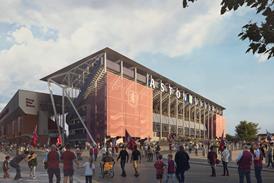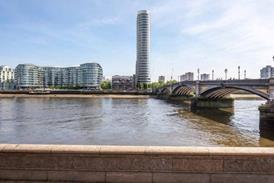- Home
- Intelligence for Architects
- Subscribe
- Jobs
- Events

2025 events calendar Explore now 
Keep up to date
Find out more
- Programmes
- CPD
- More from navigation items
This Stirling Prize is a riposte to the chorus of British declinism

The Elizabeth Line’s Stirling Prize triumph exemplifies Britain’s capacity to deliver transformative, forward-looking infrastructure through exceptional design and collaboration
The Elizabeth line’s Stirling Prize win is far more than a celebration of architectural excellence. It is a profound statement that Britain, when it chooses to, can still deliver world-class infrastructure that is optimistic, forward-looking, and transformative. In a time when narratives of British decline seem pervasive, the Elizabeth line stands as a powerful rebuttal – proof that when we harness our collective expertise, we can create civic infrastructure that not only serves but uplifts.
The Elizabeth line is not just a feat of engineering and design; it is a living example of how civic, economic, and social infrastructure can be beautiful, functional, and inspiring. The success of this project is underpinned by design brilliance that elevates it far beyond the often grimly utilitarian environments so typical of our public transport systems. It demonstrates how thoughtful architecture can shape the daily lives of millions, providing not only a practical service but also an environment that enhances well-being and encourages connection. The stations – from their uncluttered platforms and intuitive wayfinding to the subtle shifts in lighting – offer an experience that is calming, uplifting, and efficient.
…
This content is available to registered users | Already registered?Login here
You are not currently logged in.
To continue reading this story, sign up for free guest access
Existing Subscriber? LOGIN
REGISTER for free access on selected stories and sign up for email alerts. You get:
- Up to the minute architecture news from around the UK
- Breaking, daily and weekly e-newsletters
Subscribe to Building Design and you will benefit from:

- Unlimited news
- Reviews of the latest buildings from all corners of the world
- Technical studies
- Full access to all our online archives
- PLUS you will receive a digital copy of WA100 worth over £45
Subscribe now for unlimited access.






